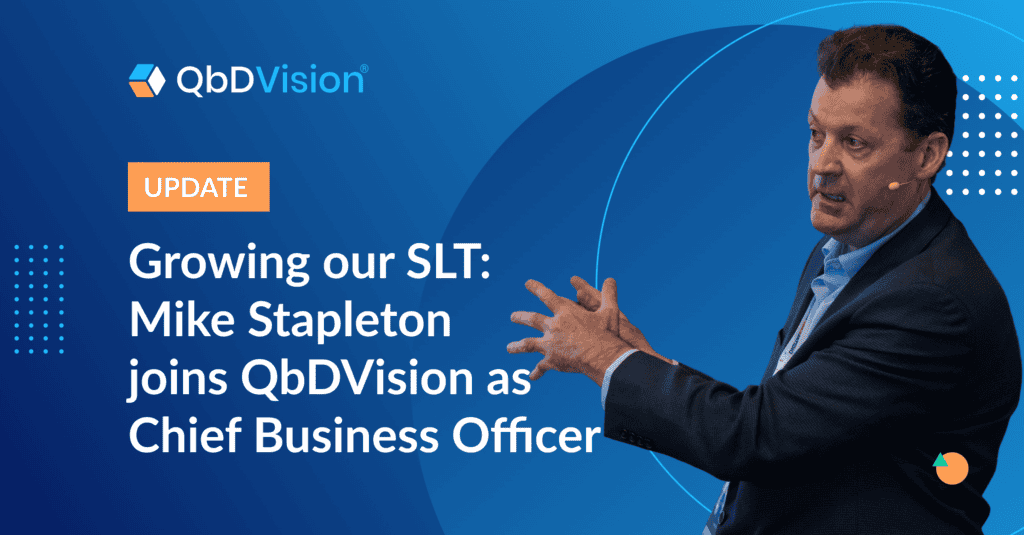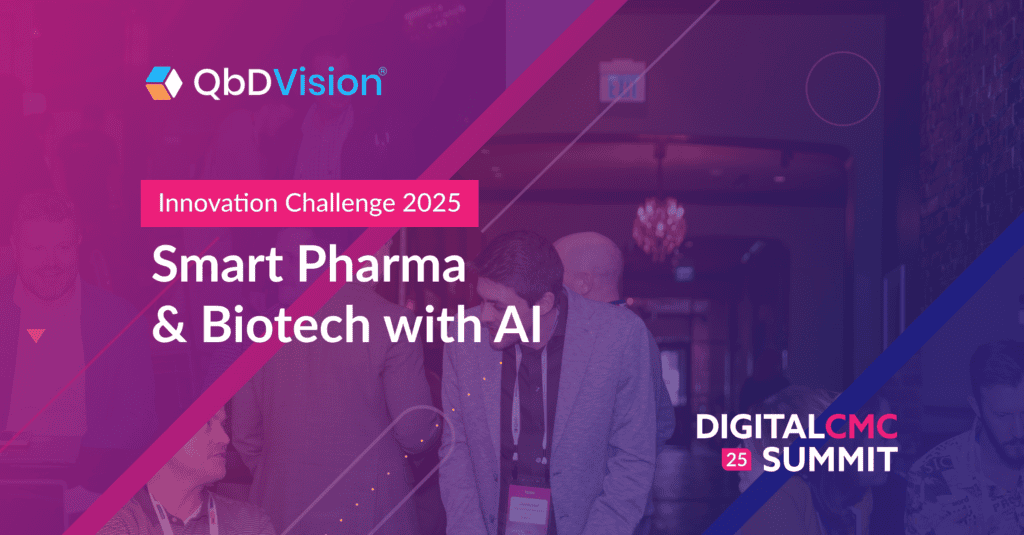For the last year or so, it’s been… well… a bit of a rough patch for our drug development industry.
So many layoffs. A record run of bankruptcies and closures. A painfully tight capital market. You name it, we’ve suffered it. As we get deeper into 2024, some sparks of hope are beginning to glimmer: deal activity is finally starting to rebound after a long funding winter. But for drug developers on a cash runway today, the message is inescapably clear. For the next few quarters, going the distance will likely require some serious belt-tightening.
As our industry gets leaner, workforces get stretched, and costs get fiercely scrutinized, everyone’s feeling the pressure to get more efficient and accelerate time-to-market. In today’s drug development landscape, that can take some serious out-of-the-box thinking. How else do you get things done faster, do more with less, and do it all with fewer people… all at the same time?
Believe it or not, it’s possible – but only with the right tools and strategies. For drug developers racing to gain efficiency, compress development timelines, and streamline operations, now’s the time to take a long, strong look at how Digital CMC solutions: how they can help organizations adapt to a challenging market, and how they can unlock new value from within those organizations.
Let’s take a look at 4 ways QbDVision can make that possible.
1. Amplify resources to accelerate timelines
There’s a confounding paradox at the heart of today’s drug development industry: the global pipeline is bursting with novel and sometimes near-miraculous drug products, yet much of R&D remains in a major productivity slump. As McKinsey recently reported, R&D spending increased 44% from 2012-2022. But the number of US novel drug approvals has stayed flat.
Of course there are many, many factors that contribute to that development bottleneck – from persistent inefficiencies in the clinical trial process, to persistently low trial success rates, to pervasive reliance on outdated and inefficient processes. But for drug developers struggling through the current downturn, one challenge looms particularly large: widespread cost-cutting means R&D teams rarely have the resources they need to efficiently develop new products.
For drug developers racing to gain efficiency, compress development timelines, and streamline operations, now’s the time to take a long, strong look at how Digital CMC solutions: how they can help organizations adapt to a challenging market, and how they can unlock new value from within those organizations.
For more than a year now, one company after another has downsized their labs to the tune of “the challenging economic environment.” Drug developers fighting to advance their development programs face a stark new reality: the margin for error in R&D is slimmer than ever, while the pressure to “get it right the first time” has become intense – along with the urgency to get it there as fast as possible.
So where does that leave companies struggling to stretch their acutely finite development budgets?
We hope it leaves them asking how they equip their leaner R&D teams to work more efficiently, collaboratively, and data-centrically. A pullback period is no time for R&D teams to be struggling with all-too-familiar silos, manual processes, and tedious data-chasing tasks. Now, perhaps more than ever, it’s time for them to investigate and deploy solutions that empower R&D teams to work smarter and faster – using frameworks and principles that magnify the value of each development step.
That’s precisely what Xeris Pharma was able to achieve by unifying their CMC programs on QbDVision. Our structured knowledge platform helped their team escape a time-sucking array of spreadsheets, SharePoints, and PDFs, and free their experts to focus on critical development tasks – rather than gathering data, documents, and inputs scattered across their organization.
The result: 6-12 months shaved off their tech transfer timelines, with all that time and all those resources added back to their operational capital.
2. Create digitally native R&D infrastructure
Despite many “economic headwinds”, some positive signals are beginning to appear in the drug development landscape – especially when it comes to M&A. Dealmaking momentum is slowly starting to ramp back up, driven by enterprises looking to prime their pipelines with promising candidates.
This trend will no doubt have many stakeholders reviving sweet dreams of an exit and payout. But it also puts up-and-coming drug developers on notice: today’s savvy acquisition hunters want to see a valuable molecule, compelling science, and robustly managed data to back them both.
What they don’t want to see is more of the notoriously fragmented, unstructured, and siloed CMC data that our industry is (in)famous for.
Few things ding asset valuation like “that analysis is definitely on our server somewhere,” “we may need to reconstruct that data,” or other signs that onboarding that new asset will be a major lift. To agree to premium valuations, enterprise buyers increasingly want to see well-kept information resources that can be leveraged with minimal friction.
An M&A upswing will have many stakeholders reviving sweet dreams of an exit and payout. But it also puts up-and-coming drug developers on notice: today’s savvy acquisition hunters want to see a valuable molecule, compelling science, and robustly managed data to back them both.
For innovators like Flagship Pioneering, the solution to messy data is simple: centralize, organize, and structure it from the start. When they generate new companies for their portfolio, they equip them with digital CMC infrastructure from inception – proactively preparing them to produce data assets in the most leverageable, value-supporting way possible.
With QbDVision, drug developers like Flagship’s portfolio companies can establish effective knowledge management with every keystroke. ICH guidelines and QbD principles are built into the framework of our structured platform, so adding necessary taxonomies and ontologies is as simple as entering the data.
QbDVision is also purpose-built to enable a FAIR approach for CMC data and data quality. So when a potential deal partner needs to see that critical process information – and understand how easily they can leverage it – that data will already be in a Findable, Accessible, Interoperable, and Reusable form. No scrambling to find or generate the reports. Just click and show.
Without that kind of structure, it can take 15 people 10 days to a month to complete a painstaking process like FMEA – inefficiency that no global organization wants to absorb. With QbDVision, it can be completed in as little as 10 seconds.
And that’s the kind of performance enterprises want to see in an acquisition target.
3. Prepare to unlock the full value of AI
For today’s drug developers, effective knowledge and data management isn’t just an M&A must-have. It’s a crucial gateway to something even more powerful: the AI applications that have taken drug development by storm in the last year.
As McKinsey recently reported, generative AI has the potential to produce 60 billion to $110 billion a year in economic value for the pharma and medical-product industries. That potential transformative impact has captured imaginations across the industry, along with the promise of spectacular efficiencies and operational enhancements in drug discovery, clinical development, marketing, and more.
There’s just one pesky little catch.
As McKinsey also notes, Gen AI “cannot deliver results unless a proper data architecture is in place.” To deliver their much-hyped impact, AI models need consistently structured, high-quality training data – and that’s often in short supply for CMC programs, even in R&D enterprises swimming in petabytes of information.
To deliver their much-hyped impact, AI models need consistently structured, high-quality training data – and that’s often in short supply for CMC programs, even in R&D enterprises swimming in petabytes of information.
The size, strength, and depth of that data architecture will be one of – if not the biggest – rate limiting factor for any drug developer hoping to capture some of that eye-popping new value. So where should they start building it?
For CMC programs, QbDVision can be a perfect starting point. It’s an off-the-shelf solution for structuring, integrating, and stewarding drug development data – “architecture in a box” for businesses that are thinking ahead to how they’ll leverage that data through an AI model.
By centralizing and rationalizing CMC information, QbDVision also provides a valuable way to facilitate the multidisciplinary collaboration that’s vital to successfully developing and deploying new data models. With all CMC data in one structured platform, it’s readily accessible for both data scientists and process scientists alike.
And that makes it an upfront investment that can deliver major, AI-powered dividends for future programs.
4. Streamline your CMC tech stack
While the right technology can deliver immense value, “too much of a good thing” is still a very real risk for drug developers in today’s tough market. A unified knowledge management hub can help reduce fragmentation, inefficiency, and data sprawl. A profusion of point solutions can drive those challenges right back up.
Not surprisingly, as many organizations look to lean out their operations, one key priority is often consolidating tech stacks – which are frequently bloated with siloed tools for managing risk, process knowledge, product knowledge, tech transfers, and more. Consolidating an array of these narrow solutions is often a critical goal for businesses of any size that are aiming to operate more efficiently.
QbDVision can facilitate that important effort as well. It’s purpose-built to handle a much broader range of development activities, with comprehensive quality risk management baked into every workflow or dataset. It provides a centralized, fully integrated hub for all product and process information, eliminating the need for separate systems to store and manage either set of knowledge. And it can now integrate with a growing range of MES systems.
Not surprisingly, as cash gets tight and timelines get tighter, many drug developers are racing to consolidate their tech stacks – which are often bloated with siloed tools for managing risk, process knowledge, product knowledge, tech transfers, and more.
As major players like Sanofi and Bayer have already discovered, these capabilities can make QbDVision a lynchpin for information systems that span the product lifecycle – as well as a valuable solution to tech stack sprawl. Using the platform’s open API and fast-growing range of integrations, these organizations have leveraged QbDVision to unify an array of disparate data sources and fully connect their CMC ecosystems from discovery to commercial manufacturing.
Doing so has enabled them to work more efficiently, manage risk more comprehensively, and harness their data at a much greater scale – and do so with a right-sized tech stack. That can be a transformative shift for drug developers navigating today’s choppy market waters, and it’s one that QbDVision can readily support.
No matter your goals, now’s the time to prepare for a better market
As we get further into 2024, we all hope today’s sparks of hope will kindle an upswing in the drug development market – one that will reignite investment, deal activity, and industry productivity. Until then, doing more with less will be a critical goal for today’s up-and-coming drug developers.
At the same time, those organizations need to be ready for positive traction whenever it arrives – whether that means implementing effective knowledge management, consolidating and integrating their development data, or pre-packaging key information assets for sale. When buyers come – and they will – drug developers with handoff-ready assets will be the ones who can claim standout valuations.
QbDVision can facilitate both these critical goals: optimizing operational efficiency for lean organizations and proactively turning development data into value-generating assets. To find out how, reach out any time. We’d be thrilled to show you how our platform can help bring a new level of efficiency and resilience to your development program.
GET IN TOUCH
Ready to pullback-proof your CMC operations?
Connect with our team to learn more about QbDVision and how it can streamline critical workflows across your programs.



























































